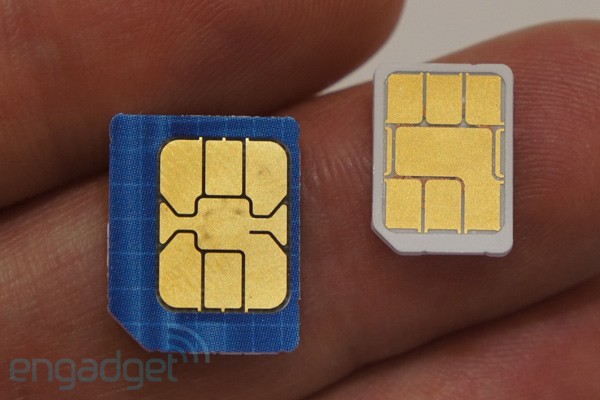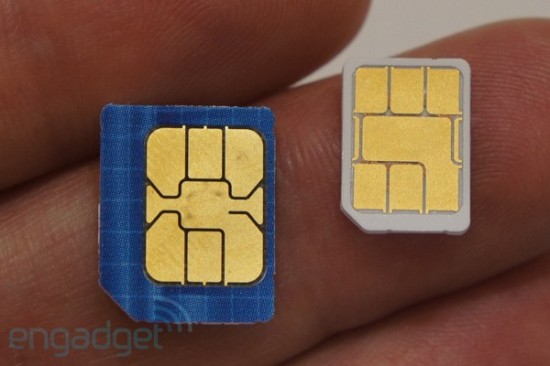[tab name=’News’]
While many of us are only just coming to terms with the Micro SIM, the industry is pressing forwards and has now developed an even smaller standard of SIM card called the Nano SIM.
Apple introduced the Micro SIM to the world a few years ago when it chose to use the standard in its iPhone 4. Subsequently other manufacturers have started to get on board, with HTC using Micro SIM in its One X and One S, Samsung using it in the Galaxy SIII and Nokia doing the same for its Lumia 800 and 900 flagship devices.
However, the Micro SIM card still has plenty of technically useless plastic surrounding the gold contacts, which phone manufacturers have been levying to get rid of. They say that if the SIM card can be made smaller, so can their devices – thinner in particular.
Motorola, Apple and Nokia all submitted designs for a new smaller SIM card, and all three became embroiled in a bit of a fiasco, each arguing that their design should be used. ETSI, or The European Telecommunications Standards Institute, has finally decided on a suitable standard for a smaller SIM card, and you’ll see it in the image above (right) compared to the current Micro SIM (left). The design chosen was Apple’s.
The new SIM design is 40% smaller than the Micro SIM, measuring 12.3mm by 8.8mm, keeping the same thickness of 0.67mm. With this smaller design, manufacturers may be able to make future smartphones thinner and even pack more tech in, thanks to the space saved.
There’s currently no word on when we will see the new SIM standard used in new devices, but with main manufacturers HTC, Samsung and Nokia already wheeling out their big guns and Apple’s design being chosen, it’s looking very likely that we’ll see the new SIM standard in the iPhone 5.
Let us know your thoughts on our comments below or via our @Gadget_Helpline Twitter page or Official Facebook group.
Image Credit: Engadget
[/tab]
[end_tabset]

